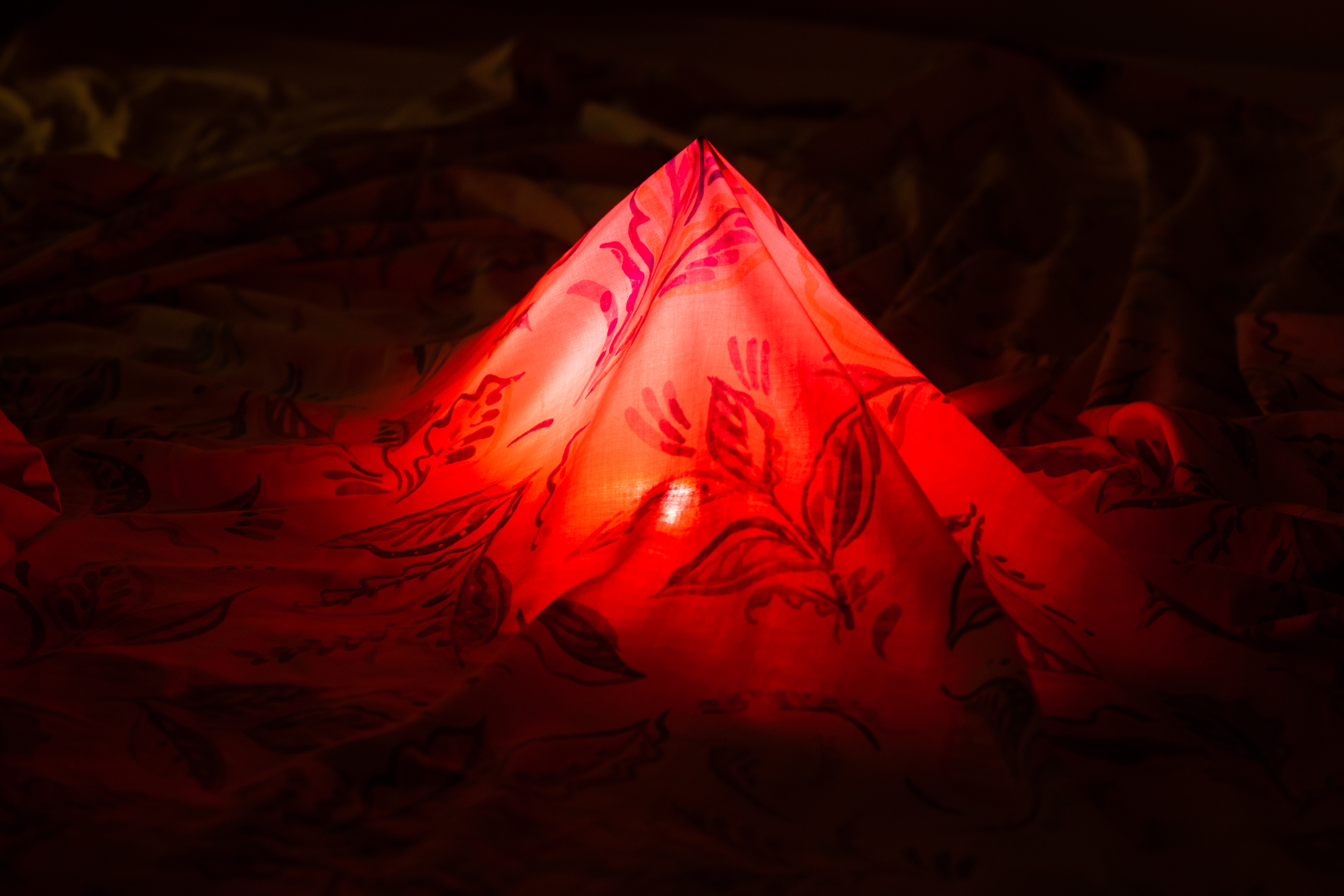Every night the same routine: Remove the tiredness, dismantle the restfulness, state of inaction, system of staying. Little by little I sink into the dark. I repeat the same words to myself : fantasy, search, stillness. I find refuge and relief from the days’ anxiety. I go through places of other times, geography challenges me, I move my eyes from one place to another. I invent new shapes, new colors and geometries. The earth is smaller, a body spits out the sun.
The sky is red, the birds have already left. A mountain rests on fatigue. Lights turn on, I count the seconds that never end. Something exists on the horizon, but boiling water with the scent of lavender comes out of my house. The roots have grown and I try to bring them to their original place, to give them a drink, but the light does not let me. Precious circles fall from the sky.
The word imagine comes from forming a mental figure. Imagining is a human quality, also myth and legend. To make an image is to imagine. To imagine is to lie. These images are a lie, they look like sketches, notes in the search. I trace paths, I undo them again. I use time, I create a space where everything exists or not. I fail in every attempt.
This narrative is born from the need to explore the space of sleeping and resting as an escape and a fantasy. The images are an expression of the desire to get out of reality and the physical condition, of the pure body, to which the virus has returned us. At the beginning of the confinement, I had the feeling that my body was something that hurt me and that it could easily fall apart. I began to make these images and as an act of resistance to that violence that I was experiencing. Although the project began in the context of confinement due to the pandemic, these images do not refer to it from a documentary point of view. On the contrary, I turned to photography as a possible space in which to invent a place with vestiges of what does not exist. Thus, as Bachelard (1965) mentions, “If I were asked to name the chief benefit of the house, I should say: the house shelters day-dreaming, the house protects the dreamer, the house allows one to dream in peace.” (p.36).
Bachelard, G. (1965). La poética del espacio. Fondo de Cultura Económica.























